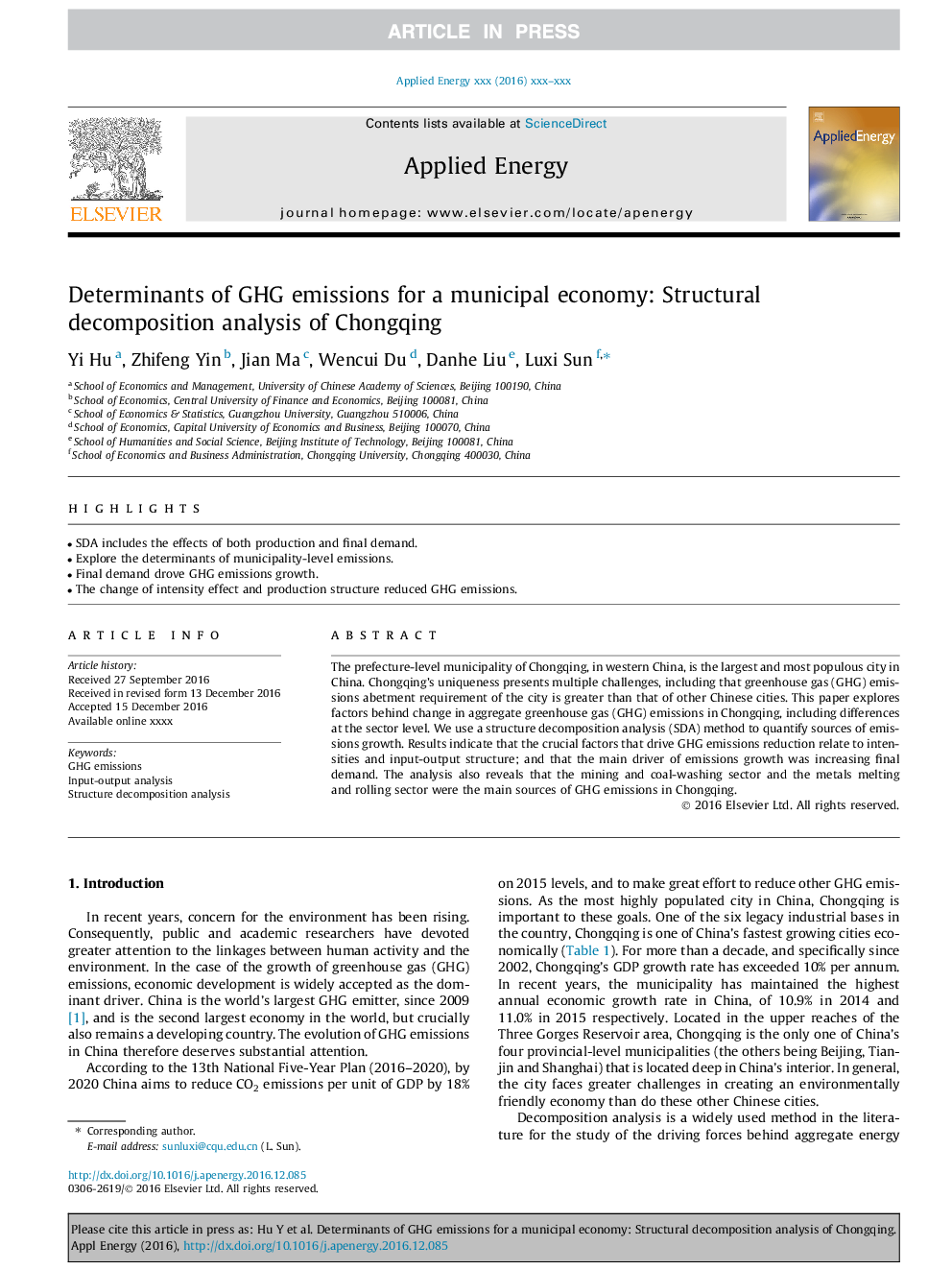| Article ID | Journal | Published Year | Pages | File Type |
|---|---|---|---|---|
| 4916224 | Applied Energy | 2017 | 8 Pages |
Abstract
The prefecture-level municipality of Chongqing, in western China, is the largest and most populous city in China. Chongqing's uniqueness presents multiple challenges, including that greenhouse gas (GHG) emissions abetment requirement of the city is greater than that of other Chinese cities. This paper explores factors behind change in aggregate greenhouse gas (GHG) emissions in Chongqing, including differences at the sector level. We use a structure decomposition analysis (SDA) method to quantify sources of emissions growth. Results indicate that the crucial factors that drive GHG emissions reduction relate to intensities and input-output structure; and that the main driver of emissions growth was increasing final demand. The analysis also reveals that the mining and coal-washing sector and the metals melting and rolling sector were the main sources of GHG emissions in Chongqing.
Keywords
Related Topics
Physical Sciences and Engineering
Energy
Energy Engineering and Power Technology
Authors
Yi Hu, Zhifeng Yin, Jian Ma, Wencui Du, Danhe Liu, Luxi Sun,
